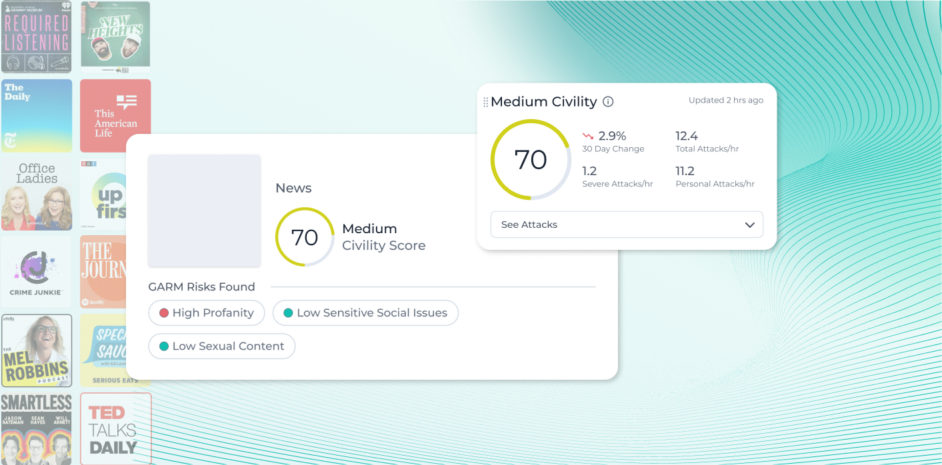In the rapidly evolving world of digital marketing, programmatic contextual advertising has emerged as a powerful tool for brands to reach their target audience with pinpoint accuracy. This approach goes beyond mere demographics or behavior, leveraging the power of contextual data to deliver personalized content, right when and where it’s most relevant. In this blog post, we dive into what programmatic contextual advertising is, how it works, and why it’s a game-changer for businesses looking to maximize their online advertising ROI.
What is programmatic contextual advertising?
First, let’s make sure we’re on the same page regarding what programmatic contextual advertising is. Programmatic contextual targeting combines the best of programmatic advertising with contextual targeting. It’s a powerful online advertising strategy where ads are placed on websites based on the context of the site’s content. This means that ads are automatically placed in front of relevant audiences based on the page’s content.
For example, let’s say you’re reading an article about the best running shoes for trail runners. Alongside this content, you may see a programmatic contextual ad related to running, because that’s what the content of the page is about. It could be an ad for running shoes, a subscription to a running magazine, etc. Contextual ads feel natural because they match the content on the page. They don’t interrupt the user experience. And they work. 79% of consumers are more comfortable seeing contextual over behavioral ads.
Compare this to behavioral targeting, in which consumers are targeted based on their online behavior or specific characteristics. If you’ve ever visited Amazon and then had ads for the products you looked at follow you around the internet, you know what behavioral targeting is. Programmatic contextual advertising allows for more precise and effective targeting, as it takes into account the context of the content being consumed. It is extremely important to marketers, with contextual ad spending expected to reach $412 billion by 2025.
Contextual advertising in a cookieless world
One reason programmatic contextual advertising is so important to marketers is the death of the cookie. As privacy regulations tighten and brand safety concerns increase, marketers are increasingly looking to contextual advertising as a way to reach the right audiences without relying on cookies. Without cookies, behavioral targeting becomes much more difficult and less effective. However, with programmatic contextual advertising, ads can still be placed in front of relevant audiences based on context alone. This makes it a valuable tool for marketers looking to navigate the post-cookie world.
Benefits of programmatic contextual advertising
There are a number of key benefits associated with programmatic contextual targeting.
Reach and scale
Programmatic advertising offers marketers the ability to scale their advertising in ways that simply aren’t possible with manual ad placements. By utilizing algorithms and data analysis, programmatic platforms can quickly and efficiently serve ads to a wide range of relevant audiences.
Increased brand safety
Brand safety is always a challenge for advertisers, particularly when it comes to programmatic advertising. However, contextual targeting can address this issue by ensuring that ads are placed in appropriate environments. By analyzing the context of the content being consumed, advertisers can avoid appearing next to controversial or inappropriate material. This matters to consumers. A lot. So much so that 88% of consumers said that it was very important for brands to ensure their ads don’t show up next to unsafe content.
Higher engagement rates
One of the main benefits of programmatic contextual advertising is its ability to reach audiences at the right time and place. By delivering ads that are highly relevant to their audiences, marketers can increase engagement and conversion rates. The data backs this up. Approximately 65% of consumers are more likely to make an online purchase when an ad is relevant to the content they’re viewing.
Efficiency and automation
Programmatic advertising enables advertisers to automatically deliver and optimize ads to consumers. This is a massive time-saver compared to trying to manually review and place ads in the right context. Additionally, automation allows for real-time adjustments to be made based on performance data, leading to more efficient and effective campaigns.
Privacy-friendly
Programmatic contextual advertising doesn’t rely on cookies or other behavior-tracking marketing tactics. As consumers become increasingly concerned about their privacy, marketers need to be mindful of how they reach their target audiences. By utilizing contextual targeting, advertisers can deliver relevant ads without relying on personal data, maintaining consumer trust and avoiding any potential legal issues.
Bring clarity to your campaigns
Explore IndustriesChallenges of programmatic contextual advertising
Despite all the advantages of programmatic contextual targeting, there are still challenges that marketers must overcome.
Accuracy of content analysis
Contextual advertising is only as strong as the content analysis technology used to determine relevancy. If the analysis is not accurate, ads may be placed in irrelevant or potentially harmful contexts, which can harm a brand’s reputation.
Brand safety
Wait, didn’t we say increased brand safety was a benefit of programmatic contextual targeting? Yes, we did. But the safety of your brand depends on, as we noted above, the accuracy of the content analysis. If content is not evaluated correctly, it can result in your ads being placed in inappropriate contexts.
Reliance on technology
Ensuring brand safety while still advertising at scale requires a robust technological solution that takes advantage of the latest advancements in AI, machine learning, and Natural Language Processing (NLP). If your tech stack isn’t robust enough, your brand safety can be compromised, and the benefits of programmatic contextual targeting may not be fully realized.
Best practices for programmatic contextual advertising
Now that you know the advantages and disadvantages of programmatic contextual advertising, let’s talk about some of the best practices.
Define clear campaign goals and target audience
As with any type of advertising, it’s essential to have clearly defined campaign goals and a specific target audience in mind. This will help ensure your ads are placed in the right contexts and reach the right people. What are you trying to achieve through your ad campaigns? Are you looking for…
- More leads?
- Increased brand awareness?
- More website traffic?
- Higher conversions?
Once you have a clear goal in mind, you can then determine your target audience and tailor your ad messaging accordingly. This will also help with content analysis and ensure that your ads are placed in appropriate contexts.
Go beyond keywords
Keyword lists, while certainly useful, are inherently limited. If you want to scale your advertising, you need to think in terms of brand suitability. This means taking into account not just keywords but also the overall context of web pages. For example, if you’re promoting a travel company, targeting keywords like “beach vacation” or “hotels in Bali” may seem obvious. However, it’s essential to consider the context of these keywords. Are they being used in an article about relaxing vacations, or are they mentioned in a news article about a natural disaster By going beyond keywords and looking at the bigger picture, you can ensure that your ads are placed in brand-safe and relevant contexts.
Leverage data insights for optimizations
One of the main advantages of programmatic advertising is the ability to gather and analyze data in real-time. By leveraging these insights, brands can make strategic optimizations to their ad campaigns. For example, if you notice that your ads are performing well on certain websites or in specific contexts, you can increase bids for those placements. On the other hand, if certain keywords or contexts are producing poor results, you can adjust your targeting strategy accordingly.
Additionally, data insights can also be used to inform creative decisions. By understanding which ad formats and messaging resonate with your target audience, you can produce more effective ads in the future.
Choose reliable partners and technology providers
As you navigate the minefield of programmatic contextual targeting, it’s essential to have reliable partners by your side. Your third-party partners and providers, including ad networks and publishers, should adhere to the same brand safety standards as you do. Failure to do so can result in negative perceptions due to association. Make sure you vet and revisit your partners’ policies throughout your relationship to confirm you’re still aligned.
Final thoughts
Programmatic contextual advertising is a powerful tool to reach your target audience in the most relevant, impactful way, while ensuring brand safety and suitability. Embracing this approach allows brands to resonate more profoundly with their consumers, establishing trust, and fostering strong relationships.




